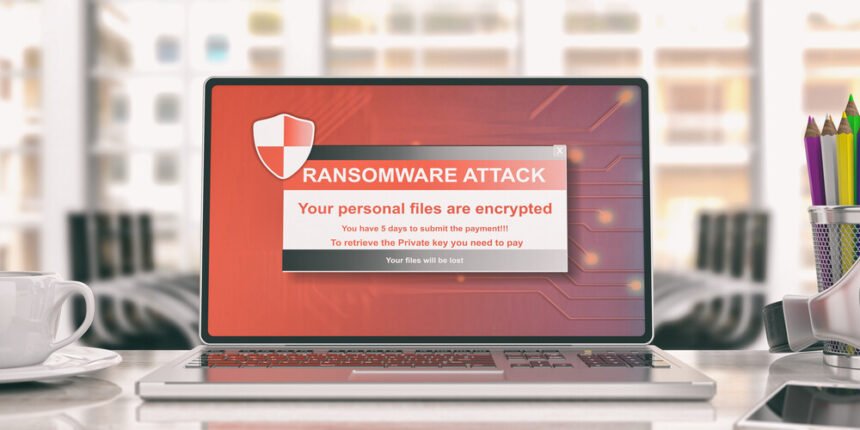AI technology has led to some massive changes in recent years. Most of these developments have been good. Unfortunately, there are dark sides to the evolution of AI.
One of the drawbacks of AI has come in the realm of cybersecurity. On the one hand, AI has helped improve cybersecurity in some ways. On the other hand, hackers are weaponizing AI to create more horrifying attacks.
There are a number of ways hackers create more devastating attacks with AI. One of the biggest issues is that they are creating new forms of ransomware with machine learning capabilities.
Hackers Use AI to Create Terrifying Forms of Ransomware
In the world of cybercrime, the leading event is a phishing email, which accounts for the vast majority of security breaches in business. However, even though phishing is significantly more common, 85% of organizations are more worried about ransomware and the impacts a ransomware attack could have on their business going forward.
Much like a phishing event, ransomware is fairly easy to trigger. With phishing, a user will accidentally navigate to a false page, where they could give away information like their user login or password. Similarly, ransomware only takes a few clicks – with a user selecting a file and accidentally downloading an email attachment to their computer.
Hackers have used AI to create more effective phishing attacks. They can use machine learning to better understand the types of links users will click on and what time to send emails to get the most downloads. They can also use AI technology to make their ransomware more vicious. AI can train malware to evade antivirus protection software and bypass other elements of the computer security system.
The main purpose of ransomware is to take all computer systems and files hostage from a business, eliminating their ability to get work done and charging a (normally) fixed fee to recover the systems. Unlike phishing, which doesn’t seem to have a simple exit option, ransomware has a payment wall in place that could alleviate the problem.
AI has certainly made ransomware worse than ever. But that calls into question for a business – should they pay hackers when AI-driven ransomware is detected on their systems? In this article, we’ll explore the ransomware phenomenon, demonstrating why, ultimately, paying is very rarely the right decision to make.
Let’s get right into it.
Why Does Ransomware Powered by AI Frustrate Companies?
Ransomware is designed to completely shut down business operations for as long as possible. Most commonly, hackers will target user accounts that have access to the largest selection of company files. If a hacker gains access to an account that cannot then access any systems, they’ve essentially hit a dead end.
However, if a hacker gains access to an administrator account, they can then cause havoc for the business. From instantly privatizing all files and disabling all systems to downloading private financial data, hackers with administrator accounts can completely stall a business in its tracks.
Especially for businesses that need to actively deal with clients to continue their day-to-day work, disabling these systems and barring access to files means the business can’t make any more money. With high-turnover businesses, even a few hours of system downtime can cause a huge problem, let alone days or weeks at a time.
Without the ability to conduct business, and with costs mounting up without profit, many businesses see paying the ransom as the right thing to do.
Ransomware appears to be even more effective when it uses AI technology. Hackers depend on it to infect their users.
Why You Should Never Pay the Ransom
When your business is dealing with a ransomware event, it can often feel like you’re trapped in a corner. Without your systems and files to fall back on, many businesses don’t know where to go. This feeling of panic usually pushes them into making a rash decision and paying the fees.
In 2021, the average ransom payment for a business was over $800,000 USD, with this being no small sum for the vast majority of businesses. Typically, any business that could easily afford this amount would receive a much higher figure, meaning paying ransomware is always going to eat into profits a considerable amount.
While paying the ransom may seem like the simplest option, there are two main reasons that you should never submit:
- No Guarantee – Even after you’ve paid the money, this is not a legal contract that you’re signing. There is no guarantee that once you pay the full figure, the hackers will give your system back. Worse, there is no guarantee that they haven’t hidden further ransomware deep in your systems, which would lead to further complications down the line.
- Creating a Target – When you pay a ransom to attackers, you’re sending a message to every other cybercriminal in the ecosystem that you’re a company that is willing to pay. Not only does this create a target on your back, but there is nothing to stop the attackers you’re paying from turning around and targeting you again right away.
Quite simply, paying the ransom almost always leads to even more problems, with this being the fastest way of making your business a target for future attacks. While it may seem like the best solution, this is rarely the case.
What Should You Do?
If you’re already in the midst of a ransomware attack, then your first point of contact should be the authorities. Most of the time, authorities are able to navigate the ransomware attack on your behalf and will have tools and structures to help you get through it.
Still, this is far from ideal. The very best way to never have to pay the ransom is to take proper precautions with your business. As frustrating as it may be to realize, this attack was caused by someone in your business clicking on a file that they shouldn’t have. If your business is experiencing a ransomware attack, your first approach should be better prepared for next time.
There are a few things you should actively be encouraging in your business:
- Security training – Always provide extensive security training for your employees. As the vast majority of cybersecurity events are triggered by human mistakes, bringing your teams up to speed on the best practices is always a great idea.
- Email defenses – Make sure your company has effective firewalls and email security software that scans for malware and ransomware.
- Backups – Backups are the easiest way of beating ransomware attacks for good. All you need to do if faced with ransomware is to revert to a previous backup to solve the problem. Frequent backups will ensure that data loss is as minimal as possible.
- AI security – AI may be deadly in the hands of hackers. However, it can also be very useful in your hands as a cybersecurity expert. You will want to use AI cybersecurity technology to your advantage.
By focusing on preventative strategies, you’ll be in a much better position if your company ever falls prey to a cybersecurity event. Education, preparation, and foresight are key when it comes to keeping your business safe.
AI Makes Ransomware Worse But You Should Never Pay the Ransom
AI has led to some horrifying developments in the field of cybercrime. Hackers are using AI to create more viciouus forms of ransomware than ever. Instead of paying the ransom, preemptively put some of that money into educating your staff, creating backups of all important files, and investing in preventive measures.











